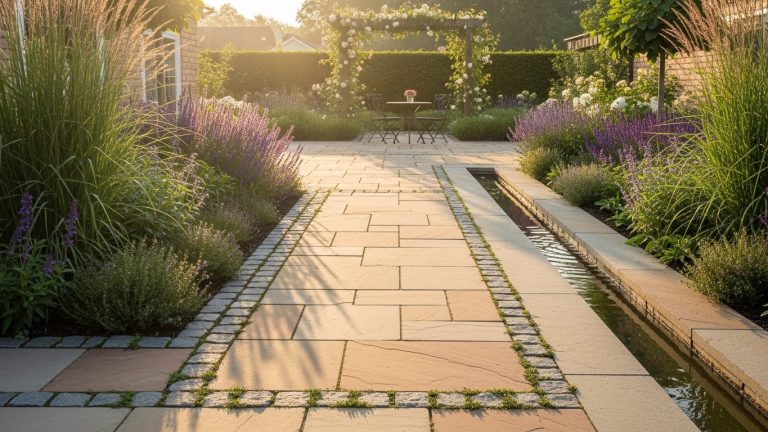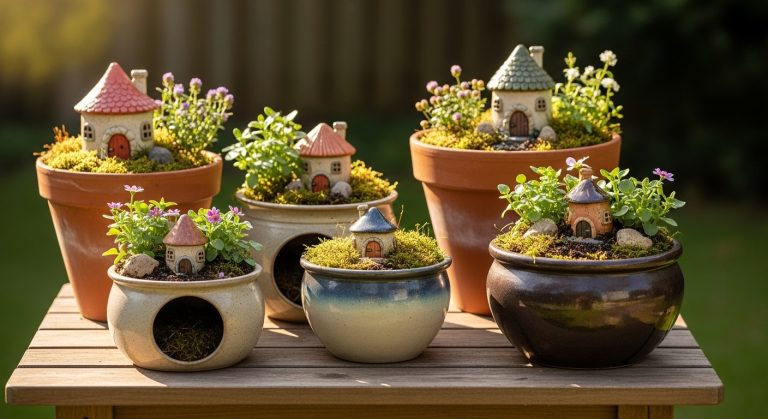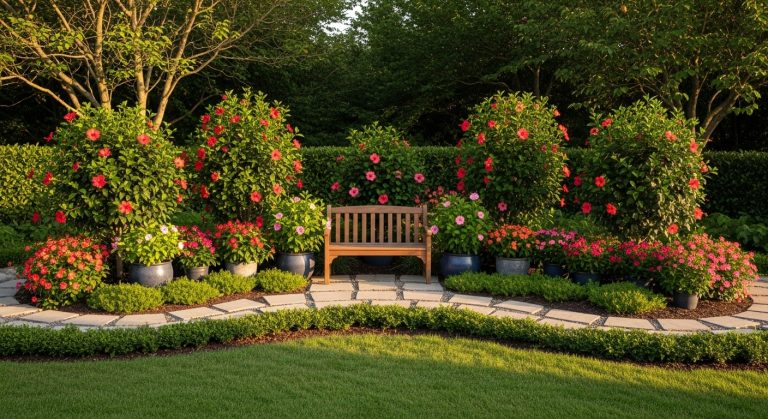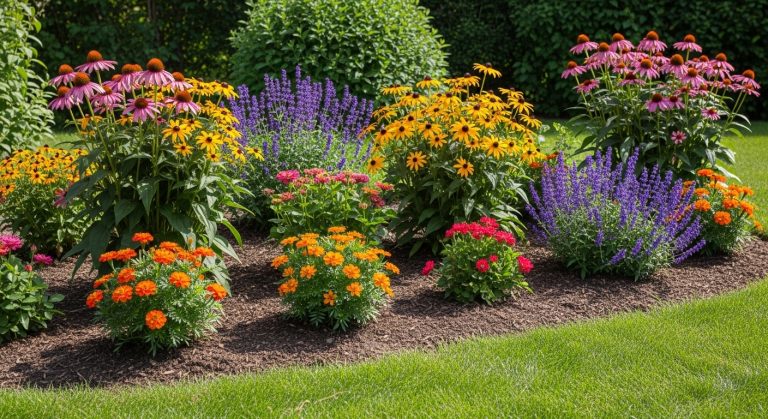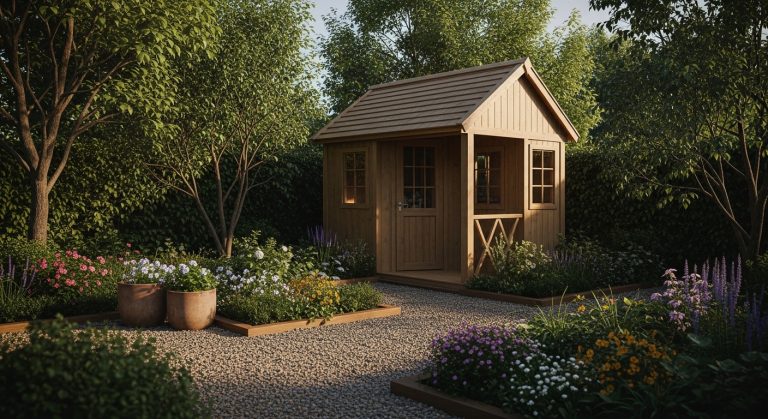Mother Garden Strawberry Ideas: 15 Creative Ways to Grow, Display, and Enjoy Your Strawberries
Ever notice how strawberries are more than just a delicious fruit? They can transform your garden into a vibrant, productive, and cozy space. I’ve spent countless weekends experimenting with different strawberry setups—from simple garden beds to clever container arrangements—and the results are surprisingly rewarding. There’s something special about seeing tiny green leaves unfurl, watching flowers turn into red gems, and knowing your garden is both beautiful and edible.
Mother garden strawberries aren’t just about growing fruit; they’re about creating an ecosystem that’s functional, low-maintenance, and aesthetically appealing. Whether you have a small balcony, a medium backyard, or a sprawling garden, there’s a way to incorporate these versatile plants into your outdoor space. Today, I’ll walk you through 15 practical, creative, and achievable strawberry-growing ideas that blend style, productivity, and charm.
1. Classic Raised Bed Garden for Strawberries

Raised beds are a staple for growing strawberries efficiently. I built mine from cedar planks, filling it with nutrient-rich soil. The height reduces bending while keeping weeds and pests under control.
Pros:
- Easier on the back; less bending and kneeling
- Better soil drainage and control
- Visually organized and neat
Cons:
- Higher upfront cost for materials
- Requires filling with quality soil
Mini takeaway: Raised beds give your strawberries a tidy, healthy home and make harvesting effortless.
2. Strawberry Hanging Baskets
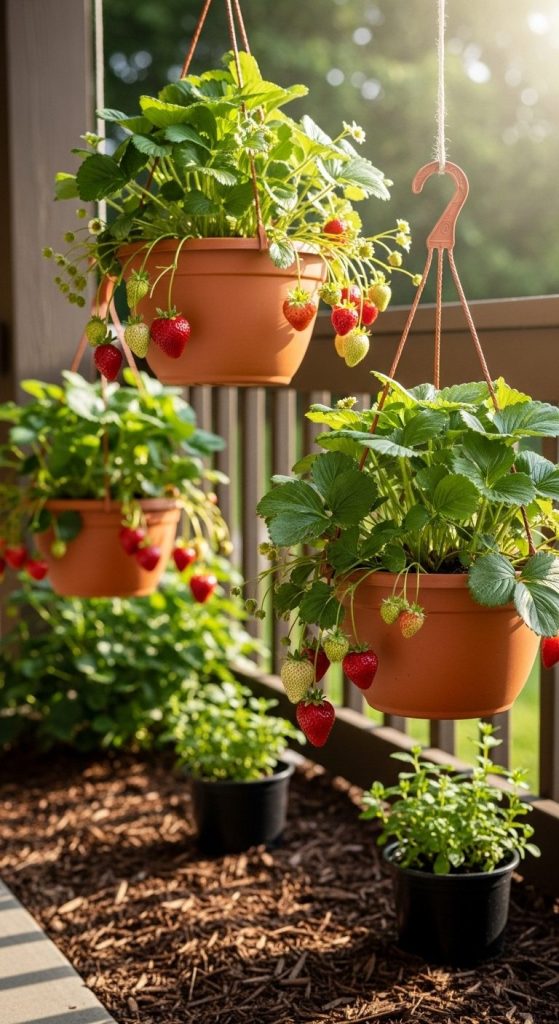
Hanging baskets instantly add a vertical dimension to your garden. I like placing mine near a sunny porch where the trailing strawberries cascade over the edges.
Pros:
- Saves ground space
- Protects fruit from pests
- Attractive vertical display
Cons:
- Requires regular watering
- Limited root space
Mini takeaway: Hanging baskets combine charm and practicality—perfect for patios or small yards.
3. Strawberry Tower Planters
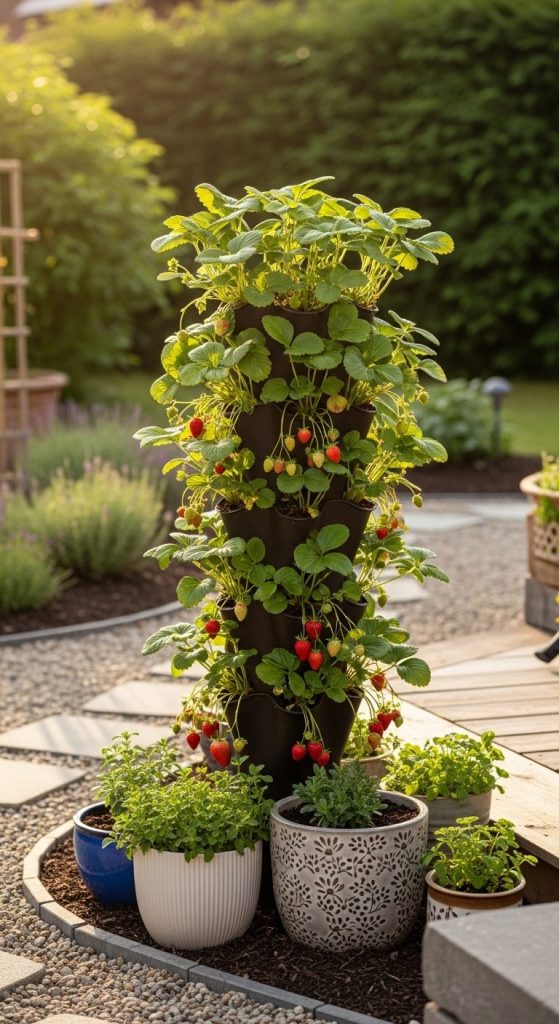
Vertical planters or towers let you grow dozens of plants in a compact footprint. I stacked mine in a sunny corner, which also creates a striking garden focal point.
Pros:
- Maximizes space
- Easy to access fruit
- Fun visual element
Cons:
- Can dry out quickly
- Requires sturdy construction
Mini takeaway: Towers are ideal for gardeners with limited space but plenty of sunlight.
4. Companion Planting with Herbs
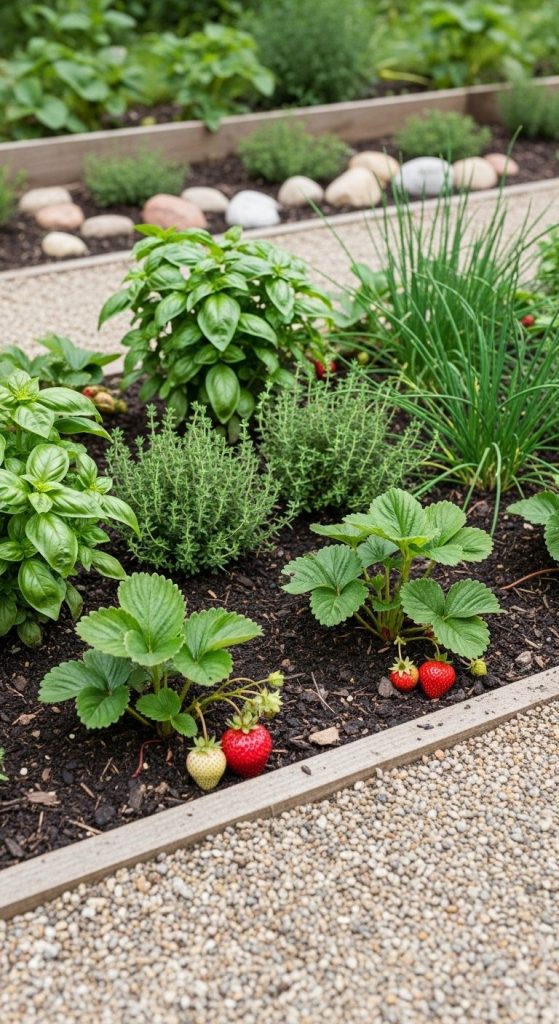
Planting strawberries alongside herbs like basil, thyme, or chives can improve flavor and deter pests. I have a small patch where mint and strawberries coexist, thriving beautifully.
Pros:
- Natural pest control
- Adds fragrance and diversity
- Enhances garden aesthetics
Cons:
- Some herbs may spread aggressively
- Requires careful spacing
Mini takeaway: Companion planting keeps your garden dynamic and multifunctional.
5. Reclaimed Wooden Crate Beds

Old wooden crates make adorable strawberry containers. I drilled drainage holes, added soil, and lined them with coconut fiber to create rustic, portable beds.
Pros:
- Eco-friendly reuse of materials
- Portable and flexible
- Charming rustic look
Cons:
- Limited plant numbers
- Wood may degrade over time
Mini takeaway: Crates offer a cozy, creative way to grow strawberries anywhere.
6. Strawberry Window Boxes
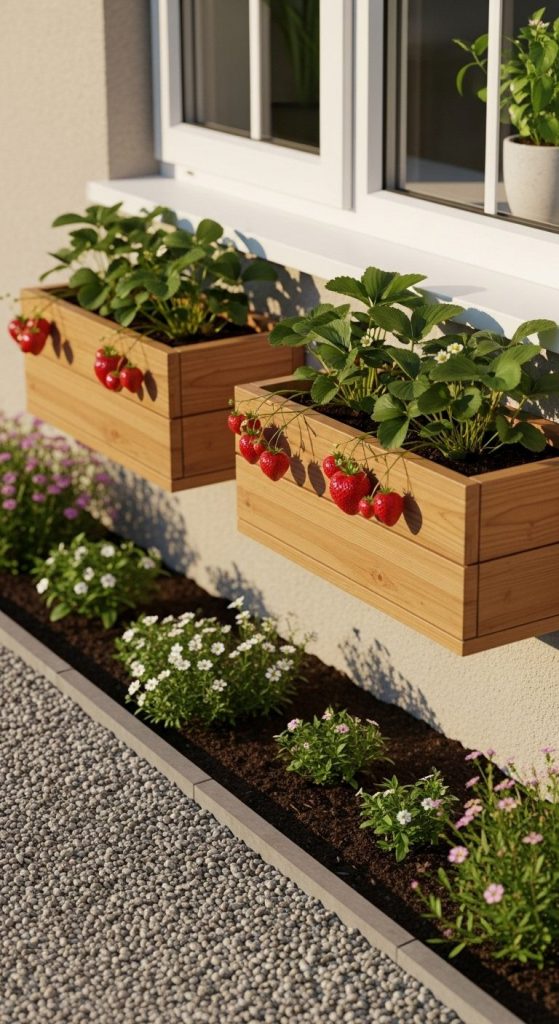
Window boxes aren’t just decorative—they’re productive. I mounted mine on the sunny side of the house for easy snacking right outside the kitchen.
Pros:
- Convenient harvesting
- Adds curb appeal
- Space-efficient
Cons:
- Requires consistent watering
- Root space is limited
Mini takeaway: Window boxes turn strawberries into a visually delightful, accessible treat.
7. Mulching for Healthier Plants
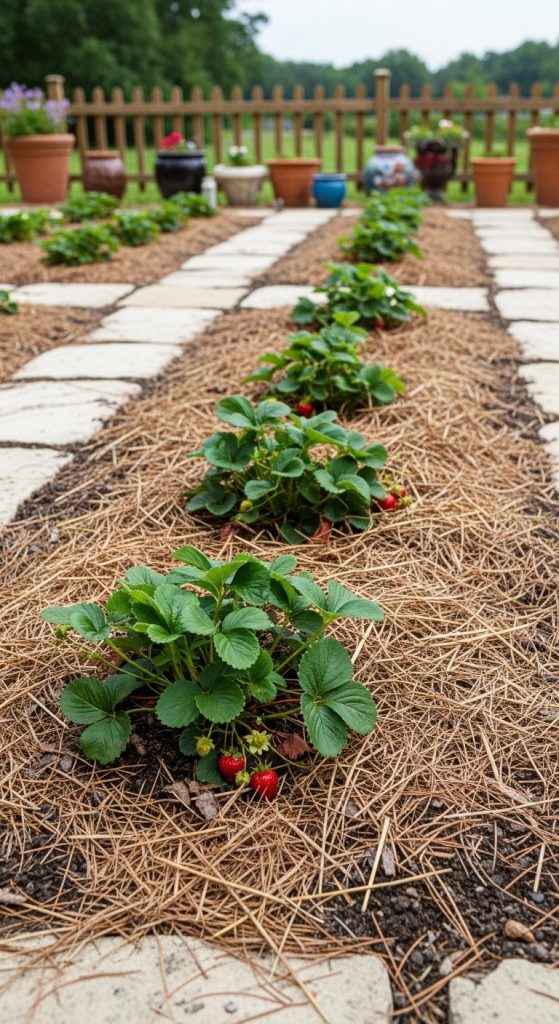
A layer of straw or pine mulch keeps soil moist and prevents rot. I love how it also gives a polished, tidy appearance while reducing weeds.
Pros:
- Conserves moisture
- Reduces disease risk
- Creates clean visual lines
Cons:
- Needs replenishing seasonally
- Can harbor slugs if too thick
Mini takeaway: Mulch is a simple yet transformative step for healthy strawberries.
8. Strawberry and Flower Borders
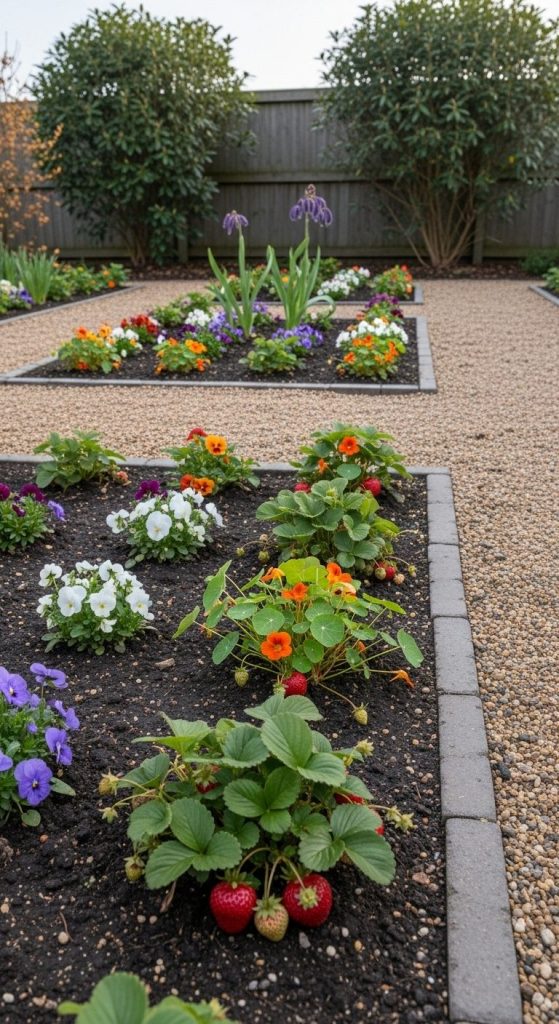
Mix strawberries with low-growing flowers like pansies or nasturtiums along garden edges. It creates an edible, colorful border that’s both decorative and functional.
Pros:
- Adds seasonal color
- Protects berries from pests naturally
- Enhances garden curb appeal
Cons:
- Flowers may compete for nutrients
- Requires trimming to prevent overcrowding
Mini takeaway: Decorative borders make your garden visually engaging and productive.
9. Vertical Pallet Gardens
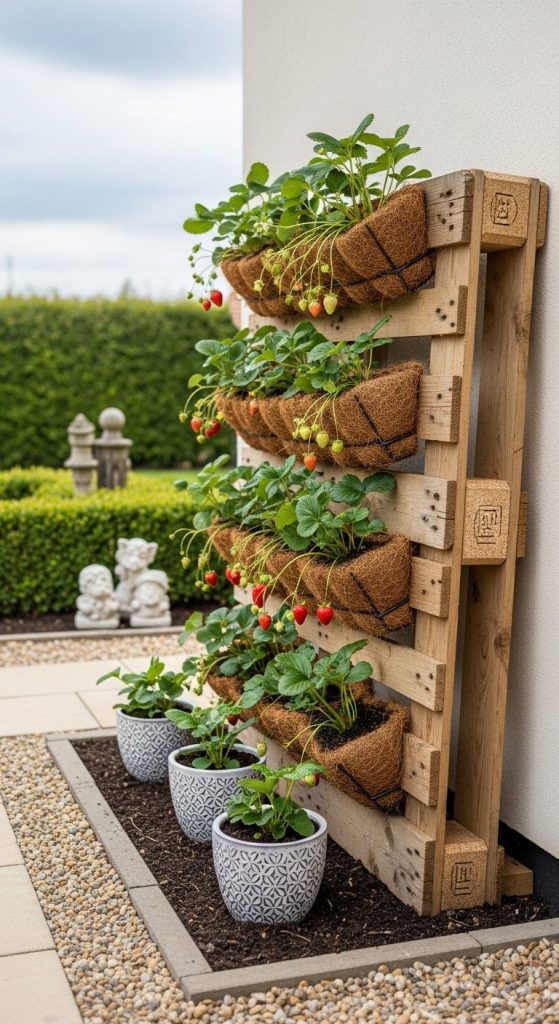
Repurposed pallets can hold multiple strawberry plants in tiers. I lean mine against a wall with coir liners for a tidy, modern vertical garden.
Pros:
- Great for small spaces
- Upcycles old materials
- Easy maintenance and harvesting
Cons:
- Requires stable support
- May need frequent watering
Mini takeaway: Pallet gardens provide a stylish, functional vertical solution.
10. Companion Flowering Natives
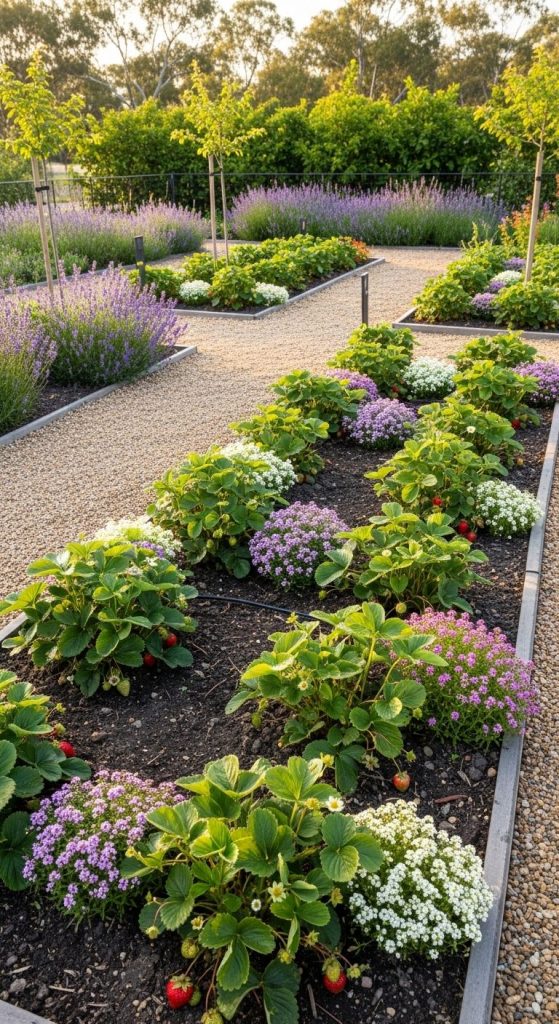
Plant strawberries with pollinator-friendly natives like lavender or alyssum. Bees and butterflies enhance fruit set while adding gentle movement to your garden.
Pros:
- Supports pollinators
- Boosts fruit production
- Adds sensory appeal
Cons:
- Requires some knowledge of plant compatibilities
- May attract additional insects
Mini takeaway: Flowers and strawberries together create a lively, balanced ecosystem.
11. Miniature Strawberry Pots
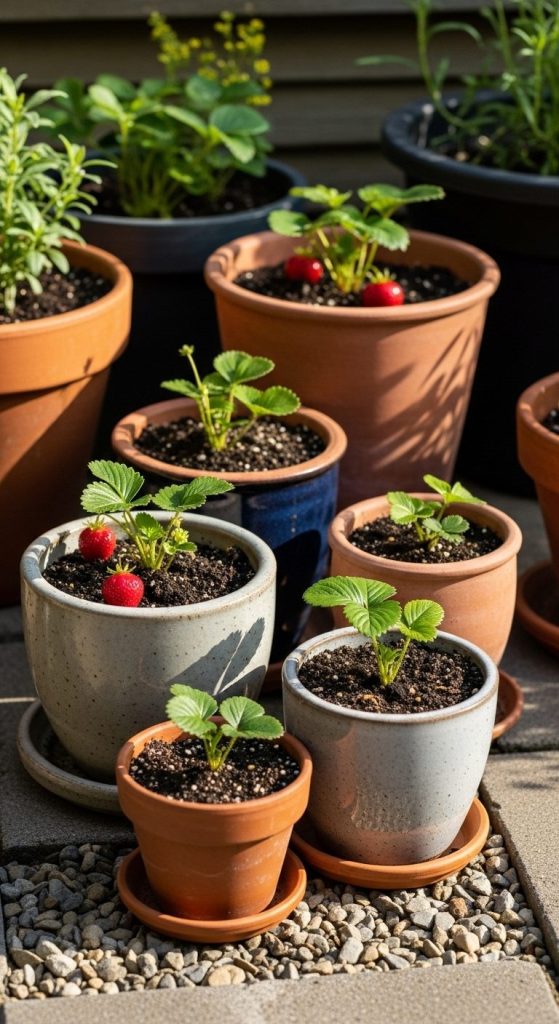
Small terra-cotta or ceramic pots work well for patios or balconies. I like grouping several pots at varying heights for visual interest and easy snacking.
Pros:
- Portable and flexible
- Stylish display
- Great for beginners
Cons:
- Limited soil volume
- Needs frequent watering
Mini takeaway: Mini pots make strawberries accessible, stylish, and manageable anywhere.
12. Raised Tiered Planters
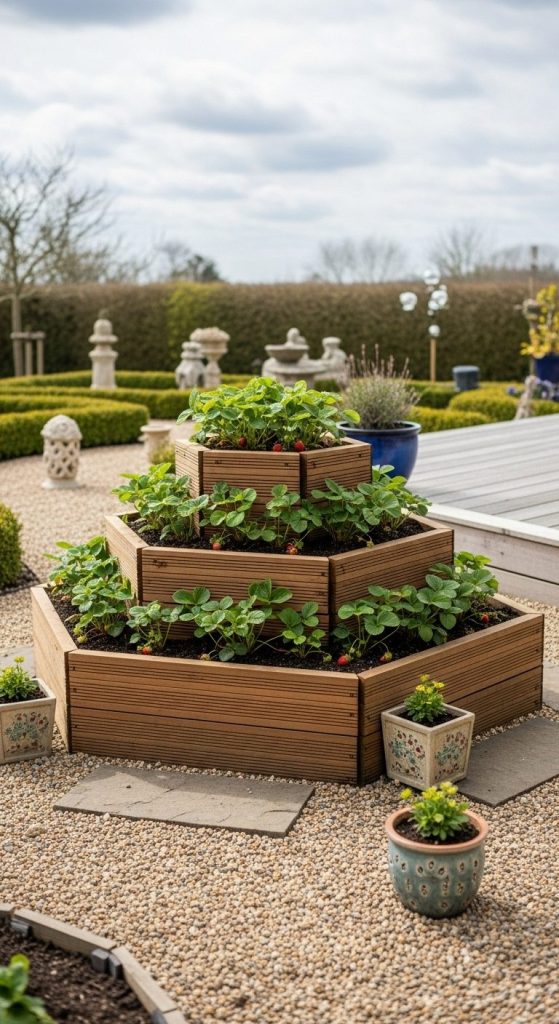
Tiered wooden planters save space and create layered beauty. I use one near a sunny deck for easy reach and aesthetic appeal.
Pros:
- Maximizes sunlight exposure
- Easier harvesting
- Visually dynamic
Cons:
- Requires initial assembly
- Soil may dry faster on top tiers
Mini takeaway: Tiered planters offer height, beauty, and practicality in one.
13. Cold Frame or Mini Greenhouse
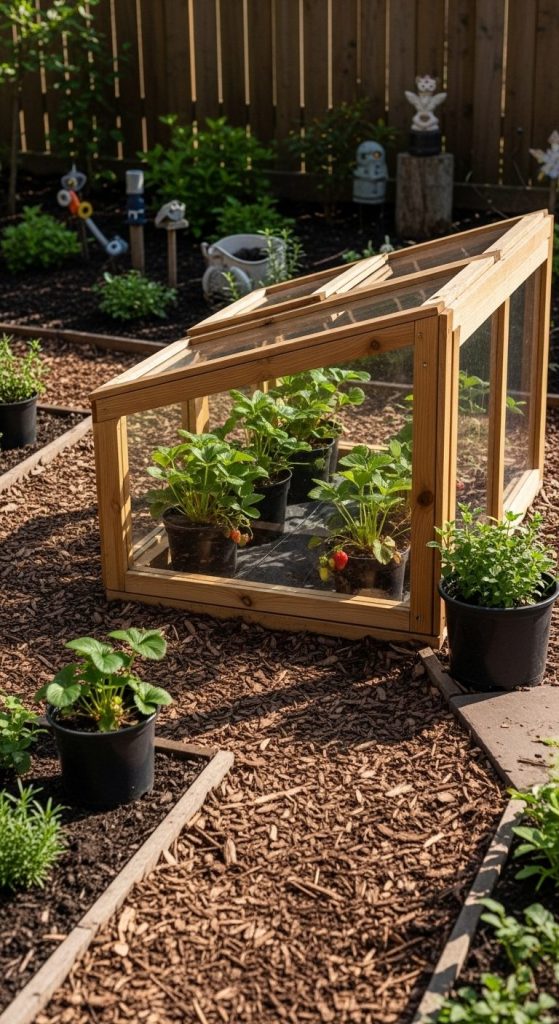
Extending the growing season with a small cold frame or greenhouse keeps strawberries producing longer. I built one from recycled windows—super effective and charming.
Pros:
- Protects from frost
- Extends harvest period
- Reduces pest exposure
Cons:
- Initial construction effort
- Space requirement
Mini takeaway: Cold frames let you enjoy strawberries even in cooler months.
14. Hanging Macrame Holders

Stylish macrame holders for small pots bring strawberries indoors or onto covered patios. I love how it combines boho aesthetics with function.
Pros:
- Adds artistic flair
- Saves floor space
- Easy to move
Cons:
- Limited plant size
- Requires weight support
Mini takeaway: Macrame holders merge beauty with accessibility in a cozy, modern way.
15. Companion Groundcover Plants
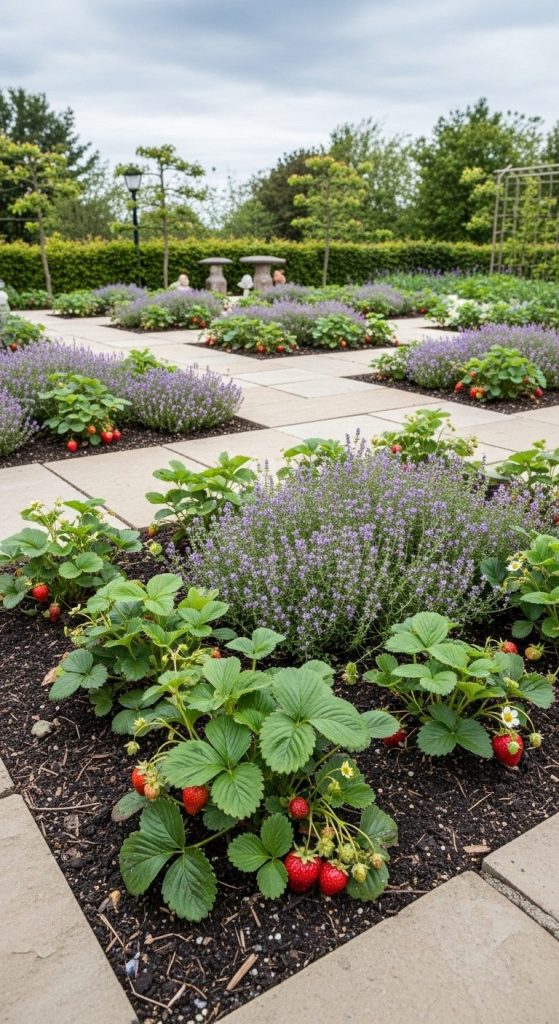
Use low-growing groundcovers like creeping thyme around strawberries to suppress weeds and retain moisture. I adore the lush, integrated effect it creates.
Pros:
- Reduces weeds
- Enhances moisture retention
- Adds a lush, cohesive look
Cons:
- Groundcovers may compete for nutrients
- Needs initial establishment
Mini takeaway: Groundcovers make your strawberry patch a harmonious, low-maintenance garden bed.
Conclusion
Mother garden strawberries are versatile, charming, and surprisingly easy to integrate into almost any garden. From raised beds and window boxes to vertical towers and creative containers, these ideas let you grow fruit while elevating your outdoor space. Personally, I’ve found that even small interventions, like mulching or companion planting, dramatically improve productivity and visual appeal.
Pick a setup that fits your space and style—maybe a hanging basket for a balcony or a tiered planter for your deck—and start small. Over time, these plants reward you with delicious fruit, aesthetic joy, and a garden that feels alive, abundant, and inviting. Strawberries aren’t just plants; they’re little garden treasures waiting to brighten your day.

William Martin is a passionate bowler who spends most of his weekends playing the sport. With years of intense experience under his belt, William decided to share his knowledge by creating BOWLING OCEAN. Join me on this journey to explore the world of bowling and discover the tips and tricks to becoming a pro.


